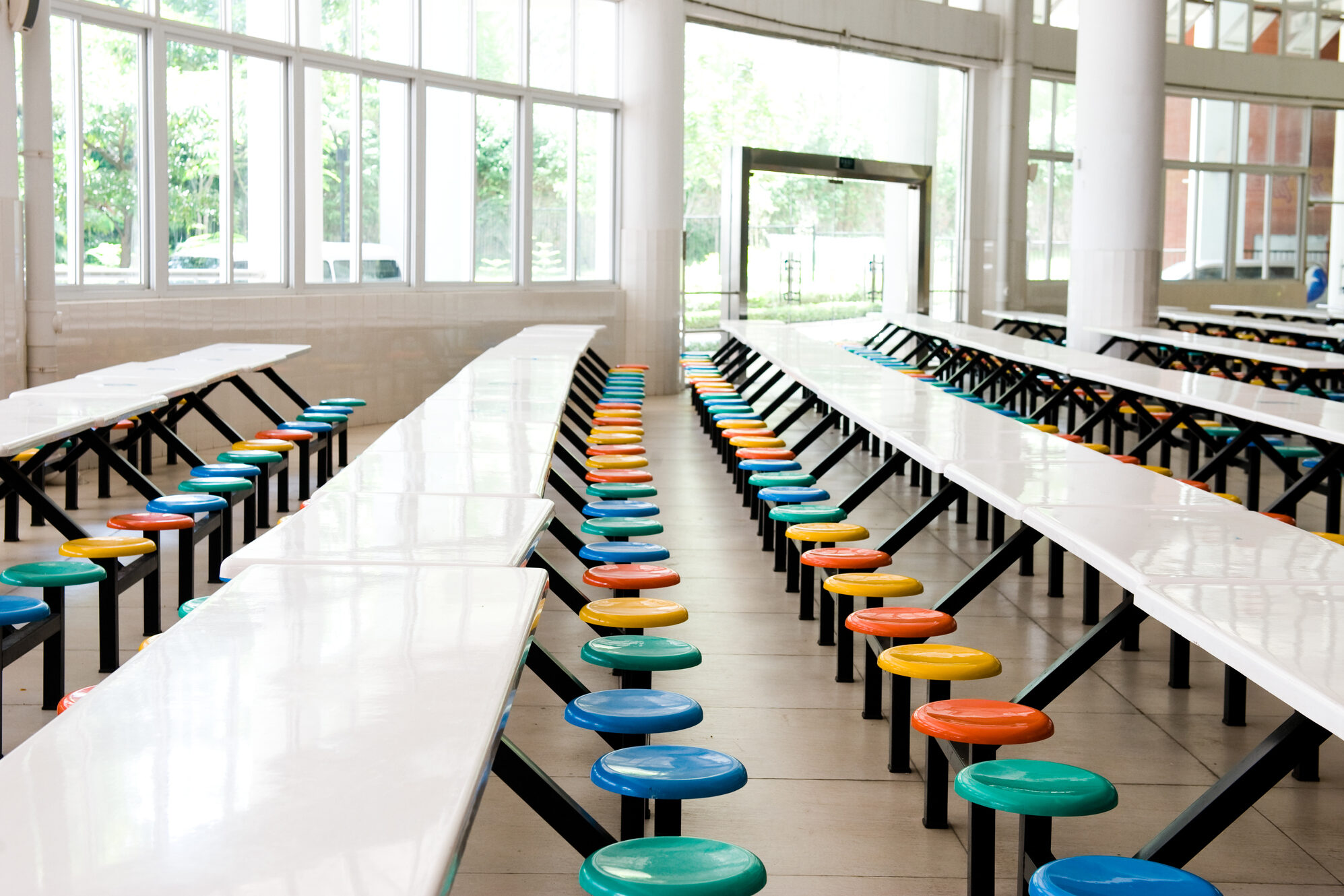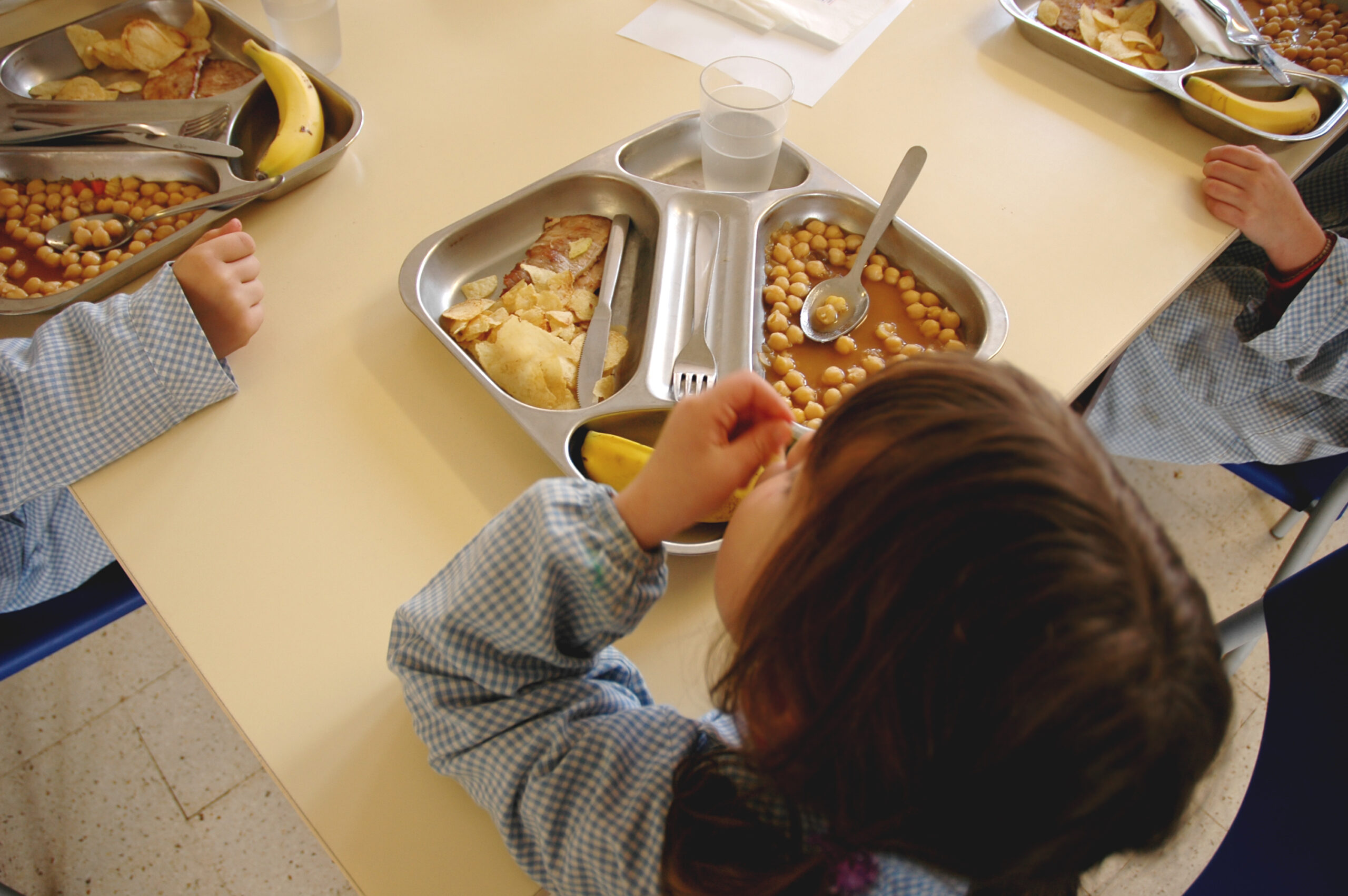Ditching Disposables Toolkit
IntroductionThe goal of this toolkit is to help your school or school district make the transition from single-use food service ware (foodware) containing harmful chemicals towards healthier and more sustainable options. Food packaging and foodware can release toxic chemicals into food or beverages and should be considered when serving a healthy meal. While there is some reference to scientific studies on toxic chemicals found in common food serviceware and their potential effects on human health, much of this toolkit provides information about best practices from our direct experience implementing reusables at a number of school sites.
Above all, we suggest that schools consider reusable foodware products first. Thoughtfully selecting and investing in reusables can eliminate exposures to common toxic chemicals such as PFAS, BPA, and styrene, decrease waste production, and improve waste sorting behavior. While there is no “one-size fits all” approach for moving a school or a school district to reusables, we compiled a variety of approaches, perspectives, research, case studies, and experience about K-12 schools ditching disposables.
Contents

Introduction
How to use this toolkit
This toolkit is divided into sections to make it easier for you to navigate to specific topics or steps, as needed. You can even print the sections relevant to you. This resource encapsulates everything you would want to know about making the switch to environmentally preferable foodware and healthier K-12 school lunches.
CEH’s Mission/Why is CEH in the K-12 School Space?
CEH’s mission is to protect people from toxic chemicals in the environment. We believe our air, water, food, and products should be free of dangerous and untested chemicals. There are, unfortunately, a whole host of toxic chemicals in foodware, particularly single-use foodware. While we do not want anyone to be exposed to these toxic chemicals that leach into food from their foodware, young children are especially vulnerable.
We want transparency about ingredients in foodware so we can move the market to safer chemistry–both for single-use, as well as reusables. It is time to “turn off the tap” to these toxic chemicals.
Chemicals of Concern: Disposables
While there can be any number of undisclosed chemical ingredients used to manufacture foodware and food packaging, CEH is particularly concerned about single-use products. For both disposable plastic and paper/fiber-based foodware, the lack of transparency about their chemical composition and the long term health impacts are exacerbated by how quickly we go through them. These products have negative health and environmental impacts throughout their lifecycle. Many manufacturers add chemicals (known as additives), such as biocides, UV stabilizers, and plasticizers to enable disposable foodware to handle hot, wet, or greasy food, function in a microwave, and store leftovers for several days. Some of these toxic chemicals have been found to leach into the food or beverage from the container. Another big concern with single-use foodware–especially plastic–is that even though it can often be used for as little as five minutes, the product itself takes hundreds of years to decompose and ultimately generates microplastics.
According to the National Resource Defense Council (NRDC): “Ninety-nine percent of all plastics are made from fossil fuels and contribute to toxic pollution throughout their life cycle.” Many nonprofit organizations believe that single-use plastic, like those used in foodware, should be some of the first plastic to phase out of production. Many of these single-use foodware items contain toxic chemicals that can get into the environment especially when foodware is disposed of. Moreover, it is not just plastic foodware that we are concerned about – paper and fiber-based products can also contain harmful chemicals – with one of the best known examples being the use of the notorious PFAS “forever chemicals” used in molded fiber foodware made from a range of fibers such as sugarcane/bagasse or wheatstraw. (See CEH’s Hidden Hazards Report).
Hidden Hazards
Many of the chemicals and additives used to manufacture foodware and food packaging have been shown to leach out and get into our food and unfortunately the toxicity of a large percentage of them remains unknown.
Environmental Lifecycle
The time and resources needed to extract the raw or recycled material, process it, form it, and transport it is much more extensive than how long it is designed to be used. These single-use items can contribute to increased waste going to the landfill, air pollution from incinerating waste, and microplastic contamination of marine life.
Every step of the process when creating single-use items, especially plastic, results in unsustainable extraction of resources, unnecessary carbon dioxide emissions, and needless waste that is either sent to landfills or pollutes the environment. In fact, food packaging is the largest consumer of plastics derived from fossil fuels and accounts for the bulk of plastic polluting the environment. One study which used Life Cycle Assessment tools looked at the carbon emissions lifecycle of single-use plastics and their replacements and found a CO2e reduction potential of 75%-90% depending on the material type and use case.
Moving Beyond PFAS-free towards Green Chemistry
GreenScreen Certified for Single-Use Food Service Ware and Thermal Paper
We can’t keep approaching this issue chemical-by-chemical. For example, when health concerns surfaced about BPA (Bisphenol A) in popular water and baby bottles, companies reformulated and advertised “BPA-free” labels without disclosing information about the alternatives. It turned out that companies moved to chemically-related compounds (other bisphenols) such as BPS and BPF, which have been shown to have similar or worse health effects to BPA. Only recently have agencies begun to take action against the inclusion of these chemically-related compounds in everyday products. As of December 2023, the California Office of Environmental Health Hazard Assessment added BPS to the Proposition 65 list as a reproductive toxicant.
As we have learned with BPA and more recently with PFAS chemicals, the public currently lacks information about the toxicity of ingredients being used in everyday products – especially products like foodware that are in direct contact with food. There is a need for transparency about ingredients so we can move the market to safer chemistry–both for single-use, as well as reusables. Purchasers have the ability to create transparency by asking manufacturers and suppliers what ingredients are in their products and whether they have been adequately assessed for toxicity and safety. CEH has created a tool to help: GreenScreen Certified will help you identify safer single-use and reusable foodware.
Regarding PFAS chemicals, new products are coming out in response to purchasers demanding PFAS-free fiber-based foodware. However, manufacturers will not disclose what they are using instead of PFAS to provide water and grease-resistance. GreenScreen Certified for Single-Use (Food Service Ware & Thermal Paper) is an important procurement tool for identifying recyclable or compostable disposable foodware without thousands of known harmful chemicals like PFAS, bisphenols (such as BPA) or phthalates.
CEH and another national non-profit organization, Clean Production Action, co-developed the criteria in this rigorous standard to move the food service ware sector towards safer chemistry for people and the planet and avoid regrettable substitutions. GreenScreen Certified provides a framework for purchasers to demand that all chemical ingredients in the product be assessed for chemical hazard through a trusted third-party. As purchasers, an important step to getting more of these products on the market is to ask your suppliers or manufacturers to offer GreenScreen Certified products.
Value piece
Teaching students to throw away something every single school day at lunch is problematic. This normalizes the throw-away mind set. It also normalizes the idea that food is only safe or fresh if it is wrapped in plastic. The amount of processed and packaged foods has increased. If the foodware is disposable, combined with an increase in processed and packaged food, it can cause students to think of the food as disposable too. Because disposables have become so prevalent in our society, bringing reusable foodware back into K-12 schools plays an important role in our ability to establish more wide-spread adoption of reusables.
We strongly recommend a shift to reusables. This could look like a host of things, and it is a long term (marathon not a sprint) goal. But starting the conversation is what this toolkit and particularly the planning guide is trying to accomplish.
What does starting small look like?
- Look at a single item to reduce. Do you really need a solo cup for fruit or ketchup packets over dispensers?
- Start with the utensils. The spork kits have four single-use items, 3 or which are plastic. Most kids just want the straws to access the milk.
- Start just one day a week. Reusable Wednesdays for example.
- Try just doing one grade or grade group on reusables. The 4th and 5th graders get reusables. This will give the younger grades something to look forward to and ask for.
- Milk dispensers can save your school money and waste.
Remember: Reusable foodware’s functional life is on the scale of years. A stainless steel tray can have 1000+ uses.




